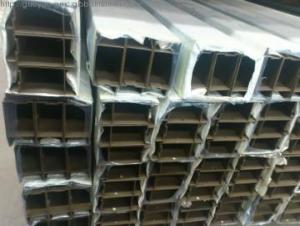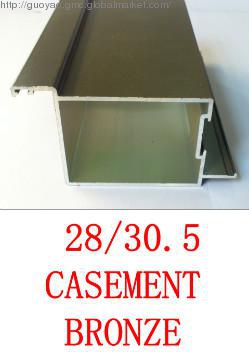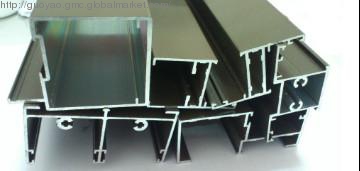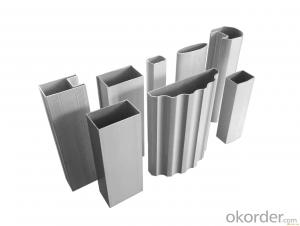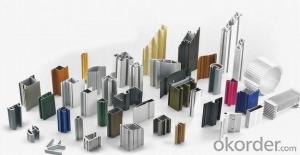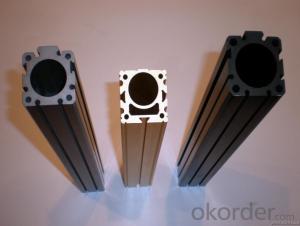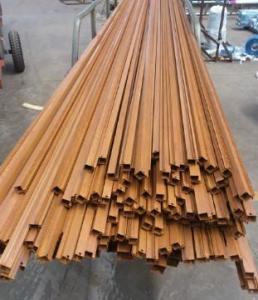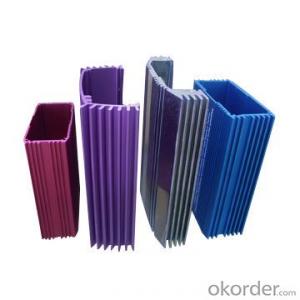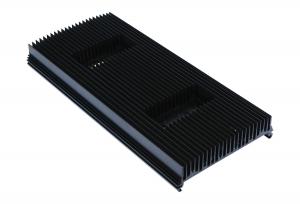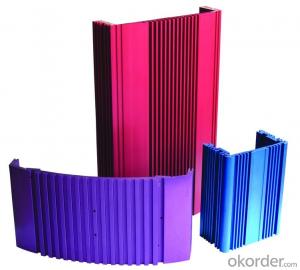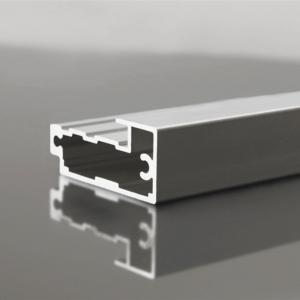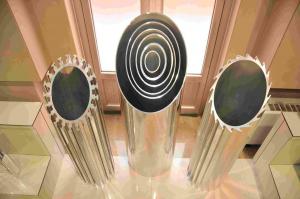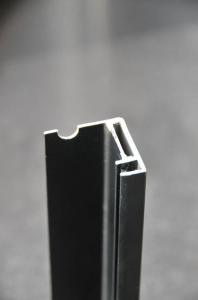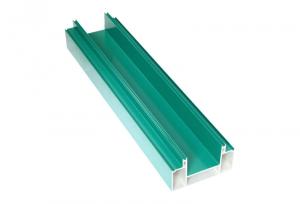Aluminum Profiles for South African Market - Canada
- Loading Port:
- China Main Port
- Payment Terms:
- TT OR LC
- Min Order Qty:
- -
- Supply Capability:
- -
OKorder Service Pledge
Quality Product, Order Online Tracking, Timely Delivery
OKorder Financial Service
Credit Rating, Credit Services, Credit Purchasing
You Might Also Like
we have been focusing on South African Markt
Matrial: 6063 T5/T6
surface:anodze and power coatin
Aluminium Profile
we have been focusing on South African Markt and have been working with SA customers
Matrial: 6063 T5/T6
surface:
Anodze 15/20 mircons
Power coating 70 mircons
Color: white, bronze and charcoal
- Q: This question asks about the variety of colors offered for aluminum profiles used in exterior siding and trim applications.
- <p>Aluminum profiles for siding and trimming are available in a wide range of colors to suit various architectural styles and design preferences. Common colors include white, black, brown, beige, and gray, which are popular for their neutrality and versatility. Additionally, there are bolder options such as red, blue, green, and yellow for more distinctive looks. Some manufacturers also offer custom color matching services for specific projects. The finishes can be powder-coated or anodized, providing durability and resistance to weathering. It's always best to check with specific manufacturers for the most up-to-date color offerings as they may introduce new colors or discontinue others based on market trends.</p>
- Q: Can aluminum profiles be used in the production of agricultural structures?
- Yes, aluminum profiles can be used in the production of agricultural structures. Aluminum is a versatile and lightweight material that offers excellent strength and durability. It is resistant to corrosion, making it suitable for use in agricultural environments where exposure to moisture and chemicals is common. Aluminum profiles can be used to build various agricultural structures such as greenhouses, barns, storage facilities, and animal housing. They can be easily assembled and customized to meet specific design requirements, allowing for flexibility in the construction process. Furthermore, aluminum profiles are low maintenance, requiring minimal upkeep over time. They are also environmentally friendly, as aluminum is a highly recyclable material, reducing the environmental impact of agricultural structures in the long run. Overall, aluminum profiles offer numerous benefits for the production of agricultural structures, including strength, durability, corrosion resistance, ease of assembly, customization options, low maintenance, and sustainability.
- Q: T6 should be 140MPa, while the aluminum profile specification should be 150MPa. Should that be the standard?Code for design of glass curtain wall... And the calculation formula of bolt connection, what is the compressive strength value of aluminum profile?Prawns help you, 3Q~
- When the contact area of the fixture and the clamp decrease, the tension in the tensile process increases, and the change in the force area and bending moment, shear force, etc. will cause the increase of the local stress and the increase of bending moment.
- Q: Are there any specific requirements for transporting and storing aluminum profiles?
- Yes, there are specific requirements for transporting and storing aluminum profiles. Aluminum profiles should be handled with care to prevent any damage or deformation. During transportation, they should be properly secured to avoid shifting or falling. It is recommended to use protective packaging and cushioning materials to prevent scratches or dents. When storing aluminum profiles, they should be kept in a clean and dry area to prevent corrosion. It is advisable to stack them horizontally or on racks to avoid bending or warping. Additionally, they should be stored away from direct sunlight and extreme temperatures.
- Q: Can aluminum profiles be cut to size?
- Yes, aluminum profiles can be cut to size. Aluminum profiles are typically manufactured in standard lengths and can be easily cut to the desired length or size using various cutting methods such as sawing, shearing, or CNC machining. This allows for customization and flexibility in using aluminum profiles for different applications.
- Q: Can aluminum profiles be used in the construction of stadium seating systems?
- Yes, aluminum profiles can be used in the construction of stadium seating systems. Aluminum is lightweight, durable, and easily customizable, making it an ideal material for creating the framework of stadium seating systems. It offers structural stability and can withstand heavy loads, ensuring the safety and comfort of spectators. Additionally, aluminum profiles can be easily assembled and disassembled, allowing for flexibility and easy maintenance of the seating system.
- Q: Can aluminum profiles be anodized for improved corrosion resistance?
- Yes, aluminum profiles can be anodized to enhance their corrosion resistance. Anodizing creates a protective oxide layer on the surface of the aluminum, making it more resistant to corrosion and increasing its durability.
- Q: Are aluminum profiles recyclable multiple times? If yes, explain the process.
- <p>Yes, aluminum profiles can be recycled multiple times. The recycling process for aluminum involves melting the scrap aluminum, which requires only 5% of the energy needed to produce new aluminum from raw materials. After collection, aluminum profiles are sorted, cleaned, and shredded into small pieces. These pieces are then melted in a furnace and cast into new ingots or billets. From there, they can be rolled, extruded, or forged into new aluminum products. This cycle can be repeated indefinitely without loss of quality, making aluminum one of the most sustainable materials.</p>
- Q: Can aluminum profiles be customized?
- Yes, aluminum profiles can be customized according to specific requirements and designs. This customization can involve various factors such as size, shape, color, finish, and additional features to suit different applications and industries.
- Q: This question asks for a list of various fasteners that are used to attach aluminum profiles to building frames.
- <p>There are several types of fasteners used to fix aluminum profiles on building frames, including: 1. Bolts and nuts, which provide a strong and secure connection. 2. Rivets, which are permanent and can't be undone once installed. 3. Screws, which are versatile and can be used in various applications. 4. Clamps, which hold profiles together without penetrating the material. 5. Adhesives, which bond profiles together chemically. 6. Welding, which joins profiles together by melting and fusing them. 7. C-clips and T-nuts, which are specialized fasteners designed for use with aluminum extrusions. The choice of fastener depends on the specific requirements of the project, such as load-bearing capacity, aesthetic considerations, and ease of assembly or disassembly.</p>
Send your message to us
Aluminum Profiles for South African Market - Canada
- Loading Port:
- China Main Port
- Payment Terms:
- TT OR LC
- Min Order Qty:
- -
- Supply Capability:
- -
OKorder Service Pledge
Quality Product, Order Online Tracking, Timely Delivery
OKorder Financial Service
Credit Rating, Credit Services, Credit Purchasing
Similar products
Hot products
Hot Searches
Related keywords
